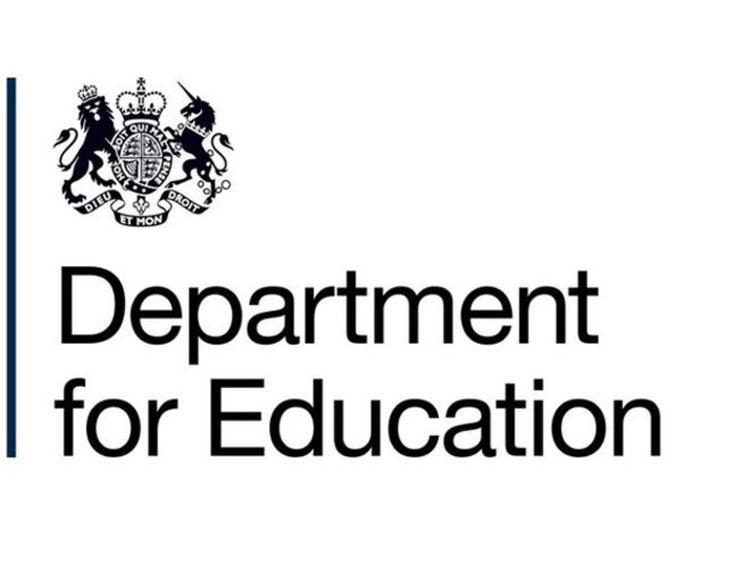School capital funding

An overview of school capital funding, who it’s for, current and past allocations, how it’s calculated and spending guidance.
Overview
The Department for Education allocates funding each year to help maintain and improve the condition of school buildings and grounds.
In any given financial year, eligible schools can access funding through one of:
- school condition allocations (SCA), with funds paid to eligible bodies responsible for maintaining school buildings
- the condition improvement fund (CIF), a bidding round with funds paid directly to single academy trusts, small multi-academy trusts (MATs), small voluntary aided (VA) bodies and sixth-form colleges
In addition, devolved formula capital (DFC) is allocated for individual schools and other eligible institutions to spend on capital projects that meet their own priorities.
Who the funding is for
School condition funding includes capital allocations for:
- local authorities and local-authority-maintained schools, including maintained nursery schools
- local voluntary-aided bodies and voluntary-aided schools
- academies and large multi-academy trusts and sponsors
- sixth-form colleges
- special schools not maintained by the local authority
- special post-16 institutions with eligible students
Eligibility for SCA for the 2021 to 2022 financial year
Schools and those responsible for school buildings are eligible for either SCA or CIF depending on their size and type.
Local authorities, larger MATs and larger VA school bodies receive direct SCA to invest in priorities across the schools for which they are responsible. Smaller academy trusts, smaller VA bodies and sixth-form colleges were instead able to bid Condition Improvement Fund (CIF).
To receive direct SCA, multi-academy trusts and VA bodies must meet both eligibility criteria:
- the trust or VA body must have had 5 or more open schools at the start of September 2020
- those open schools (or their predecessor schools) must have had at least 3,000 pupils counted in the spring 2020 census or the 2019 to 2020 individualised learner record (ILR)
Full details of how pupils are counted for eligibility are set out in the condition funding methodology for 2021 to 2022 (PDF, 260KB, 13 pages).
For special and alternative-provision schools (including pupil referral units), we now multiply the pupil count by 3 for the purposes of SCA eligibility. For example, we would now count a MAT with 1,000 pupils in special schools as having 3,000 pupils. This reflects the fact that these schools tend to have lower pupil numbers for their size, and receive more condition funding per pupil.
For nursery schools and sixth forms, we use the number of full-time equivalent (FTE) pupils rather than headcount.
In autumn 2020, we notified academy trusts and VA school bodies that are eligible for SCA in the financial year 2021 to 2022. Eligibility should not be assumed unless it has been confirmed.
All of these institution types are eligible for devolved formula capital.
Funding allocations for the 2021 to 2022 financial year
Capital funding is based on financial years. For the latest funding amounts see:
- school capital funding allocations for 2021 to 2022 (ODS, 2.14MB)
- school capital funding allocations for 2021 to 2022 (MS Excel Spreadsheet, 2MB)
How the funding is calculated
See condition funding methodology for 2021 to 2022 (PDF, 260KB, 13 pages) for information on eligibility and how the funding is calculated.
The calculations have been revised for 2021 to 2022 to reflect the results of the Condition Data Collection, which completed in 2019, and which provides high-level information on the condition of state-funded schools in England.
What you can spend it on
See condition grants spend guidance (PDF, 238KB, 13 pages) for guidance on the purpose of the fund, what you can spend it on and over what time period.
Previous years’ funding
See the National Archives website for SCA and DFC allocations for previous years.
The healthy pupils capital fund was a one-year fund for the 2018 to 2019 financial year only.
In the 2018 budget, the government announced an extra £400 million of capital funding for schools in England for the 2018 to 2019 financial year. See the additional capital funding page on the National Archives for more information.
In 2020, the Prime Minister announced an additional £560 million for repairs and upgrades to school buildings, on top of funding already allocated for the 2020 to 2021 financial year.
Good estate management
We have published guidance on good estate management. This sets out the policies, processes and documents that schools, local authorities, academy trusts and other responsible bodies should consider when managing their estates effectively. You should review the fundamentals of good estate management and use the self-assessment tool to assess their organisation’s approach. Further tools are also available to help make sure your organisation has the right skills, processes and policies.
Responsible bodies must ensure they secure value for money through appropriate procurement routes. For large projects, the school buildings construction framework is available for use and should be considered as part of project development planning.
The Trust Network
The Trust Network is a group of academy trusts who share information and expertise on managing and maintaining school premises. Go to The Trust Network website to join the network for free and find out more about their events.
The Trust Network is led by volunteers from a diverse range of MATs from across England and membership is open to all independently-run, state-funded schools. More than 250 MATs and single academy trusts are currently registered as members.
Grants to local authorities
The condition funding grant determination (PDF, 95KB, 2 pages) sets out the conditions of grant for payments to local authorities in the 2021 to 2022 financial year. The Secretary of State for Education makes grant determinations under section 31 of the Local Government Act 2003.
Published 4 April 2019
Last updated 27 April 2021 + show all updates
-
Updated information to include school capital funding allocations for 2021 to 2022, condition funding methodology for 2021 to 2022, the condition funding grant determination and the updated condition grants spend guidance. We have also added links to guidance about good estate management and to The Trust Network.
-
Updated the ‘Eligibility for SCA and CIF’ section for the 2020 to 2021 financial year.
-
Added information about ‘Additional funding allocations for the 2020 to 2021 financial year’.
-
Updated school capital funding allocations for 2020 to 2021.
-
Added school capital funding allocations, condition spend guidance and methodology for 2020 to 2021.
-
Added information about eligibility for SCA and CIF.
-
Added latest versions of documents ‘School capital funding allocations for 2019 to 2020’.
-
First published.











Responses